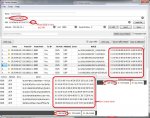RawrGuthlaf
Member
- Joined
- Apr 2, 2018
- Messages
- 7
- Reaction score
- 2
Hi, I decompiled the Android APK and began trying to interpret how the application works. I found a file DreamDroneParser.so in the project structure so decided to upload this to AVG's decompiler to see what the structure looks like. The actual decompiled code is nearly gibberish to me but this call chart kind of makes sense.
Unfortunately I have to re-upload the .so file to get the full decompiled code again as that is a limitation of the AVG's web service session. But this chart should remain available for now.
Anyway, if this is what actually handles the video feed, and not things like object recognition etc, then its possible they use some variation of OpenCV, hinted by the yuv420spToyuv420p, and yuv420pToyuv420sp methods. Theres also some references to h264 in here. Anyone who is more familiar with video formats then me may find this helpful in interpretting the tcpdumps above perhaps?
Unfortunately I have to re-upload the .so file to get the full decompiled code again as that is a limitation of the AVG's web service session. But this chart should remain available for now.
Anyway, if this is what actually handles the video feed, and not things like object recognition etc, then its possible they use some variation of OpenCV, hinted by the yuv420spToyuv420p, and yuv420pToyuv420sp methods. Theres also some references to h264 in here. Anyone who is more familiar with video formats then me may find this helpful in interpretting the tcpdumps above perhaps?

